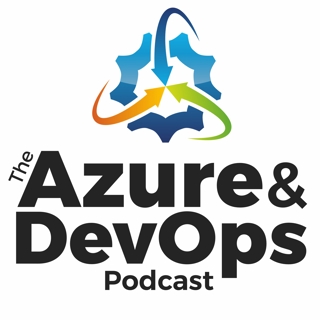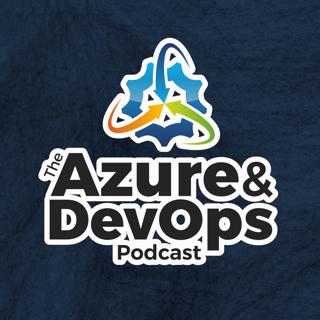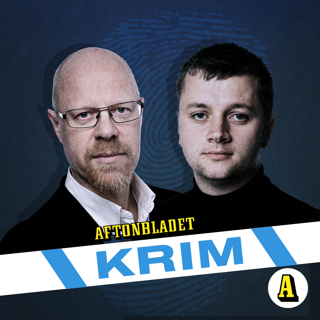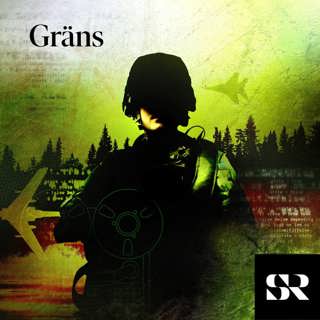
Dustin Campbell: C# 13 - Episode 339
Dustin is a Principal Software Engineer at Microsoft. He works on enhancing .NET tooling and contributing to the design of the next version of C# as part of the language design team. Prior to his current role, he spent several years working as a program manager on Project Roslyn. He also contributed in a strong way to the Razor UI framework. He recently presented a session at .NET Conf 2024 on What's new in C# 13. Topics of Discussion: [4:04] Fun fact: Dustin has a jazz guitar performance degree! [3:39] The unique appeal of C#. [5:06] Evolution of C# and its features. [10:48] Impact of Async and Await on C#. [13:17] The compatibility of C# 13 with older .NET versions, specifically .NET 8. [15:04] How developers can leverage the latest C# features while still targeting older .NET frameworks, and the challenges associated with runtime support for new language capabilities. [17:04] Hacking the C# compiler. [17:28] The evolution of records from their initial introduction to the added features. [18:46] Records vs. Classes in C#. [22:51] AI’s influence on developer productivity. [25:46] The future of AI developer tools. [33:26] The need for better support for testing with large language models and other AI-driven dependencies. Mentioned in this Episode: Clear Measure Way Architect Forum Software Engineer Forum Programming with Palermo — New Video Podcast! Email us at programming@palermo.net. Clear Measure, Inc. (Sponsor) .NET DevOps for Azure: A Developer’s Guide to DevOps Architecture the Right Way, by Jeffrey Palermo The Five Pillars: Leadership For Effective Custom Software, by Jeffrey Palermo Jeffrey Palermo’s Twitter — Follow to stay informed about future events! Dustin Campbell on LinkedIn .NET Conf 2024: What’s New in C#13 Want to Learn More? Visit AzureDevOps.Show for show notes and additional episodes.
3 Mars 38min

Scott Nichols: Azure AI Foundry - Episode 338
Scott Nichols is a Principal Cloud Solutions Architect at Microsoft. He works for the commercial enterprise division serving the high-tech division out of Silicon Valley. He is also the leader of the .NET and the Azure user groups in Boise, Idaho. He started his career in the IT profession in 1993 as a mainframe and web developer. Since then, he has served as a Lead Software Engineer/Solution Architect, a Software Development Engineering Manager, a Sr. Cloud Software Solution Architect, and a Sr. Enterprise Solution Architect. When not at the keyboard, he loves the outdoors hunting, camping, fishing, archery, and working in the yard. Topics of Discussion: [4:03] Generative AI’s turning point. [5:52] Bridging the AI coding gap. [6:39] Scott explains the shift in project workloads to generative AI-based projects, both customer-facing and internal. [7:25] Networking companies using AI to analyze telemetry data and create new products. [8:49] Azure AI Foundry is a web portal that allows developers to spin up Azure Compute and access over 1800 models. [13:00] Although a “Cloud Guy,” Scott values his on-prem hardware as a playground for learning and experimenting with AI tools. [15:04] The benefits of using open source or on-prem tools to start working with AI without incurring cloud costs right away. [15:40] The rapid pace of innovation. [20:41] An example of Khan Academy using AI to create an online tutor, requiring significant prompt engineering to ensure accurate responses. [27:12] AI agents monitoring AI agents. [27:59] AI’s limitations and opportunities. [31:56] Testing strategies for AI-Integrated systems. [35:37] The future of AI and how it’s a great time to be in AI. [39:35] Great advice for the next generation of developers and software engineers. Mentioned in this Episode: Clear Measure Way Architect Forum Software Engineer Forum Programming with Palermo — New Video Podcast! Email us at programming@palermo.net. Clear Measure, Inc. (Sponsor) .NET DevOps for Azure: A Developer’s Guide to DevOps Architecture the Right Way, by Jeffrey Palermo The Five Pillars: Leadership For Effective Custom Software, by Jeffrey Palermo Jeffrey Palermo’s Twitter — Follow to stay informed about future events! Ep 116 with Scott Nichols Scott Nichols LinkedIn Scott Nichols Twitter Want to Learn More? Visit AzureDevOps.Show for show notes and additional episodes.
24 Feb 40min

Shaun Walker: Seven Years of Blazor - Episode 337
Shaun Walker is the founder and CEO of Devessence, a global technology consultancy with a boutique approach. He’s also the founder of the Oqtane and DotNetNuke web application frameworks, which have earned the recognition of being amongst the most pioneering and widely adopted open-source projects native to the Microsoft platform. He has over 30 years of professional experience in architecting and implementing enterprise software solutions for private and public organizations. Topics of Discussion: [4:38] While AI can be a useful tool, it won’t replace the need for traditional programming. [8:32] The gap between mainstream AI messaging and the reality of digital transformation. [9:22] While AI is a significant advancement, it should be seen as just another tool in a developer’s toolkit. [9:39] The history and evolution of Blazor. [13:31] The versatility of Blazor and its ability to adapt to various hosting models make it a powerful tool for different types of applications. [14:06] Challenges and best practices in Blazor development. [16:26] The decision to make Blazor official and its impact on the .NET ecosystem. [18:12] The evolution of Blazor Server vs. Blazor WebAssembly and why both are still relevant. [21:06] When to use Blazor Static, Blazor Server, or Blazor WebAssembly, based on project needs. [24:17] The tendency for technologists to be critics without actually using the technologies. [34:36] The advantages of Octane and why it streamlines Blazor development. [39:56] The TrailBlazor Conference. Mentioned in this Episode: Clear Measure Way Architect Forum Software Engineer Forum Programming with Palermo — New Video Podcast! Email us at programming@palermo.net. Clear Measure, Inc. (Sponsor) .NET DevOps for Azure: A Developer’s Guide to DevOps Architecture the Right Way, by Jeffrey Palermo — Available on Amazon! Jeffrey Palermo’s Twitter — Follow to stay informed about future events! Devessence Shaun on X DNN Software GitHub Oqtane Philosophy ErrorBoundary and Logging in Blazor Oqtane TrailBlazor Conference Want to Learn More? Visit AzureDevOps.Show for show notes and additional episodes.
17 Feb 42min

Matt McCleary: Telemetry & Observability in .NET Aspire - Episode 336
Matt McCleary is a Senior Product Manager at Microsoft working on observability tools to empower developers to be successful. Matt started his career in engineering and has worked in tech for 10 years, the latest 8 at Microsoft. He’s been on the Azure Monitor team for most of that time. His passion is listening to customers and finding ways to make the product better. In his spare time, he finds himself coaching his 8-year-old son’s basketball team and playing in an adult men’s basketball league. Topics of Discussion: [3:26] Matt recounts his early interest in engineering and a pivotal moment during a college tour, along with his transition from civil engineering to business intelligence consulting, which led him to telemetry. [6:29] The strategy around Azure Monitor. [10:04] The three pillars of logs, traces, and metrics. [15:02] Recording custom metrics. [17:29] What is a distributed trace? [24:08] The concept of a custom event. [27:29] Future plans for Azure Monitor. [31:04] Integration with .NET Aspire. [34:04] Guidance on the best practices for Azure Monitor. [36:40] Application insights resources. Mentioned in this Episode: Clear Measure Way Architect Forum Software Engineer Forum Programming with Palermo — New Video Podcast! Email us at programming@palermo.net. Clear Measure, Inc. (Sponsor) .NET DevOps for Azure: A Developer’s Guide to DevOps Architecture the Right Way, by Jeffrey Palermo — Available on Amazon! Jeffrey Palermo’s Twitter — Follow to stay informed about future events! Matthew McCleary LinkedIn Matt McCleary Twitter Matt McCleary Github Announcing Azure Monitor OpenTelemetry Distro Want to Learn More? Visit AzureDevOps.Show for show notes and additional episodes.
10 Feb 40min

Chris Ayers: .NET Aspire and AI - Episode 335
Chris Ayers is a Senior Site Reliability Engineer on Microsoft’s AzRel Risk SRE team, drawing on years of experience in cloud architecture, software development, and DevOps practices. He’s passionate about continuous improvement, driving reliability, and sharing industry best practices. Outside of work, Chris is a devoted father, technology enthusiast, and avid gamer. Connect with him online to explore insights into cloud operations, agile methodologies, and more. He also organizes DevOpsDays Tampa Bay. Topics of Discussion: [2:50] Chris Ayers’s career journey and formative moments in site reliability engineering. [3:33] The importance of being open to learning and stepping outside your comfort zone. [8:53] Chris’s talk on Aspire, Azure, and Open AI. [9:30] How Chris is improving Azure’s reliability through internal innovation. [10:16] Benefits of Aspire: orchestration, integration, and abstraction for infrastructure. [12:29] AI extensions in Aspire: how they enable developers to work with different AI models like OpenAI and local models. [14:09] Using OpenTelemetry for seamless integration and monitoring in Azure. [18:38] Prompt engineering: crafting prompts as part of business logic. [20:50] Exploring agentic AI development and multi-agent chatbots. [21:05] AI use cases in healthcare and responsible AI principles. [29:22] Simplifying Azure resource management with Aspire and opinionated defaults. [32:35] Using Honeycomb and other tools for effective telemetry and logging. [33:39] Hugging Face and KAITO: enabling access to a marketplace of specialized AI models and Kubernetes AI integration. [34:10] Running Olama models locally: balancing scale, cost, and use cases. [39:38] AI as a tool to enhance productivity rather than replace people. Mentioned in this Episode: Clear Measure Way Architect Forum Software Engineer Forum Programming with Palermo — New Video Podcast! Email us at programming@palermo.net. Clear Measure, Inc. (Sponsor) .NET DevOps for Azure: A Developer’s Guide to DevOps Architecture the Right Way, by Jeffrey Palermo — Available on Amazon! Jeffrey Palermo’s Twitter — Follow to stay informed about future events! Chris Ayers Speaking Chris Ayers Speaker Profile Build with Aspire Want to Learn More? Visit AzureDevOps.Show for show notes and additional episodes.
3 Feb 41min

Scott Ambler: The State of Agile - Episode 334
Scott Ambler helps people and teams adopt new ways of working (WoW) and evolve their ways of thinking (WoT), particularly around data warehousing and data quality. He is the creator of the Agile Modeling (AM) (AgileModeling.com) method and Agile Data (AD) (AgileData.org) methods. With Mark Lines, he co-created PMI’s Disciplined Agile (DA) toolkit. As a conference keynote speaker, he speaks about continuous data warehousing (DW)/business intelligence (BI), how to address enterprise data debt, how to succeed at corporate AI, and agile architecture. He has also (co-)authored several books, including Choose Your WoW!, An Executive’s Guide to Disciplined Agile, Refactoring Databases, and Agile Modeling. For a full list of his books, visit Scottambler.com/my-books/. Topics of Discussion: [4:29] Scott talks about his career journey. [6:53] Scott’s early involvement in Agile. [8:34] Needing to up our game in the Agile space. [8:55] Agile2025 Conference this summer in Denver, CO. [11:20] Challenges and evolution within the Agile community. [20:01] Are we going to have a new Agile gold rush? [21:47] Keeping an eye out for inappropriate processes. [25:38] How we can do better. [28:17] The Agile Manifesto. [35:03] Importance of database refactoring and continuous data operations. [36:46] What best practices does Scott recommend? Mentioned in this Episode: Clear Measure Way Architect Forum Software Engineer Forum Programming with Palermo — New Video Podcast! Email us at programming@palermo.net. Clear Measure, Inc. (Sponsor) .NET DevOps for Azure: A Developer’s Guide to DevOps Architecture the Right Way, by Jeffrey Palermo — Available on Amazon! Jeffrey Palermo’s Twitter — Follow to stay informed about future events! Scott Ambler Scott Ambler LinkedIn The Future of Agile Isn't Shit Want to Learn More? Visit AzureDevOps.Show for show notes and additional episodes.
27 Jan 46min

Ryan Booz: The State of the Database in 2025 - Episode 333
Ryan is an Advocate at Redgate focusing on PostgreSQL. Ryan has been working as a PostgreSQL advocate, developer, DBA, and product manager for over 20 years, primarily working with time-series data on PostgreSQL and the Microsoft Data Platform. Ryan is a long-time DBA, starting with MySQL and Postgres in the late ’90s. He spent more than 15 years working with SQL Server before returning to PostgreSQL full-time in 2018. He’s at the top of his game when learning something new about the data platform or teaching others about the technology he loves. Topics of Discussion: [4:10] What made Ryan a database guy? [6:11] CodeMash. [6:58] Discovering the potential of SQL Server. [12:02] The state of the database in 2025 and the things generalist developers should know. [15:27] The challenge of interfacing between database types. [19:57] Is Microsoft Fabric the future? [22:44] Postgres for .NET developers. [24:46] Nuances of migrating from SQL Server to Postgres. [26:01] Postgres resources for data professionals. [35:29] Postgres and its innovative edge. [38:30] What is a vector database? [39:45] The power of Postgres indexing. Mentioned in this Episode: Clear Measure Way Architect Forum Software Engineer Forum Programming with Palermo — New Video Podcast! Email us at programming@palermo.net. Clear Measure, Inc. (Sponsor) .NET DevOps for Azure: A Developer’s Guide to DevOps Architecture the Right Way, by Jeffrey Palermo — Available on Amazon! Jeffrey Palermo’s Twitter — Follow to stay informed about future events! Ep 245 with Ryan Booz Figuring Out Fabric SQLGene Training Introduction to PostgreSQL for the data professional. Kindle Edition Postgres Playground pgEdge “Name Collision of the Year” Want to Learn More? Visit AzureDevOps.Show for show notes and additional episodes.
20 Jan 40min

James Montemagno: .NET Aspire with Azd - Episode 332
James Montemagno is a Principal Lead Program Manager for the Developer Community at Microsoft. He has been a .NET developer since 2005, working in a wide range of industries including game development, printer software, and web services. Prior to becoming a Principal Program Manager, James was a professional mobile developer and has been crafting apps since 2011 with Xamarin. In his spare time, he is most likely cycling around Seattle or guzzling gallons of coffee at a local coffee shop. He co-hosts the weekly development podcast Merge Conflict mergeconflict.fm. Topics of Discussion: [:36] Jeffrey introduces the concept of .NET Aspire and highlights its integration with Azure DevOps and .NET ecosystem tools. [2:51] The evolution of .NET mobile and desktop development since 2005. [4:45] An overview of .NET Aspire and its focus on simplifying app development and infrastructure orchestration. [11:45] How .NET Aspire supports both local development and cloud deployment. [16:24] Integrating DevOps automation for Azure deployments using bicep templates and Azure Developer CLI (azd). [25:30] Generating infrastructure manifests and deploying them with Azure Developer CLI. [32:51] Configuring Azure resources like Redis Cache for development and deployment scenarios. [35:11] Simplifying cloud deployment for developers using Azure Container Apps. [39:37] Polyglot support in .NET Aspire projects, allowing integration with Python, JavaScript, and more. [44:50] Plans to integrate development tunnels to streamline mobile app testing. Mentioned in this Episode: Clear Measure Way Architect Forum Software Engineer Forum Programming with Palermo — New Video Podcast! Email us at programming@palermo.net. Clear Measure, Inc. (Sponsor) .NET DevOps for Azure: A Developer’s Guide to DevOps Architecture the Right Way, by Jeffrey Palermo — Available on Amazon! Jeffrey Palermo’s Twitter — Follow to stay informed about future events! Ep 62 with James Montemagno James Montemagno James on YouTube James Montemagno GitHub James on DevOps James on X .NET Aspire Manifest plus + azd + Bicep == Mind Blown Aspire Dashboard Want to Learn More? Visit AzureDevOps.Show for show notes and additional episodes.
13 Jan 46min






















